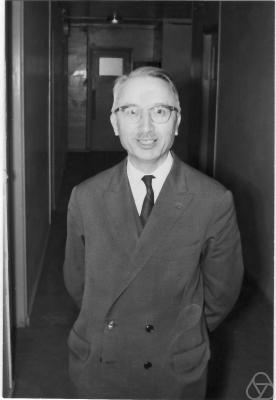<Back to Index>
- Mathematician Henri Paul Cartan, 1904
- Fabulist Jean de La Fontaine, 1621
- Rear Admiral of the Royal Navy Francis Leopold McClintock, 1819
PAGE SPONSOR

Henri Paul Cartan (July 8, 1904 – August 13, 2008) was a son of Élie Cartan, and was, as his father was, a distinguished and influential French mathematician.
Cartan studied at the Lycée Hoche in Versailles, then at the ENS, receiving his doctorate in mathematics. He taught at the University of Strasbourg from November 1931 until the outbreak of the Second World War, after which he held academic positions at a number of other French universities, spending the bulk of his working life in Paris.
Cartan was known for work in algebraic topology, in particular on cohomology operations, Killing homotopy groups and group cohomology. His seminar in Paris in the years after 1945 covered ground on several complex variables, sheaf theory, spectral sequences and homological algebra, in a way that deeply influenced Jean-Pierre Serre, Armand Borel, Alexander Grothendieck and Frank Adams, amongst others of the leading lights of the younger generation. The number of his official students was small, but includes Adrien Douady, Roger Godement, Max Karoubi, Jean-Pierre Serre and René Thom.
Cartan also was a founding member of the Bourbaki group and one of its most active participants. His book with Samuel Eilenberg Homological Algebra (1956) was an important text, treating the subject with a moderate level of abstraction and category theory.
Cartan used his influence to help obtain the release of some dissident mathematicians, including Leonid Plyushch and Jose Luis Massera. For his humanitarian efforts he received the Pagels Award from the New York Academy of Sciences.
Cartan died on 13 August 2008 at the age of 104. His funeral took place the following Wednesday on 20 August in Die, Drome.
Cartan received numerous honours and awards including the Wolf Prize in 1980. From 1974 until his death he had been a member of the French Academy of Sciences. He was a foreign member of the Finnish Academy of Science and Letters, Royal Danish Academy of Sciences and Letters, Royal Society of London, Russian Academy of Sciences, Royal Swedish Academy of Sciences, United States National Academy of Sciences, Polish Academy of Sciences and other academies and societies.